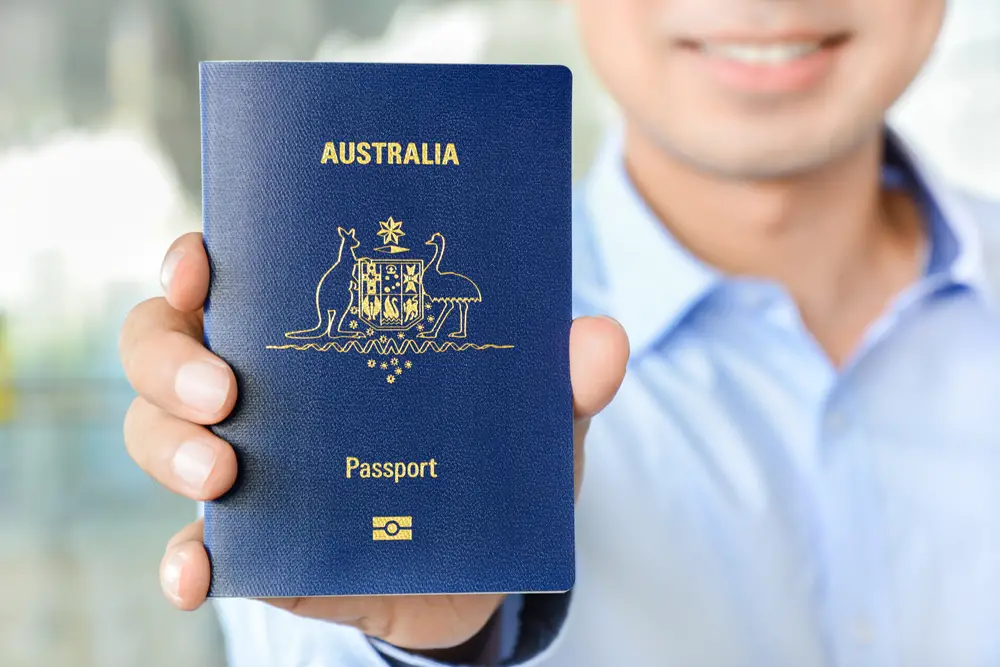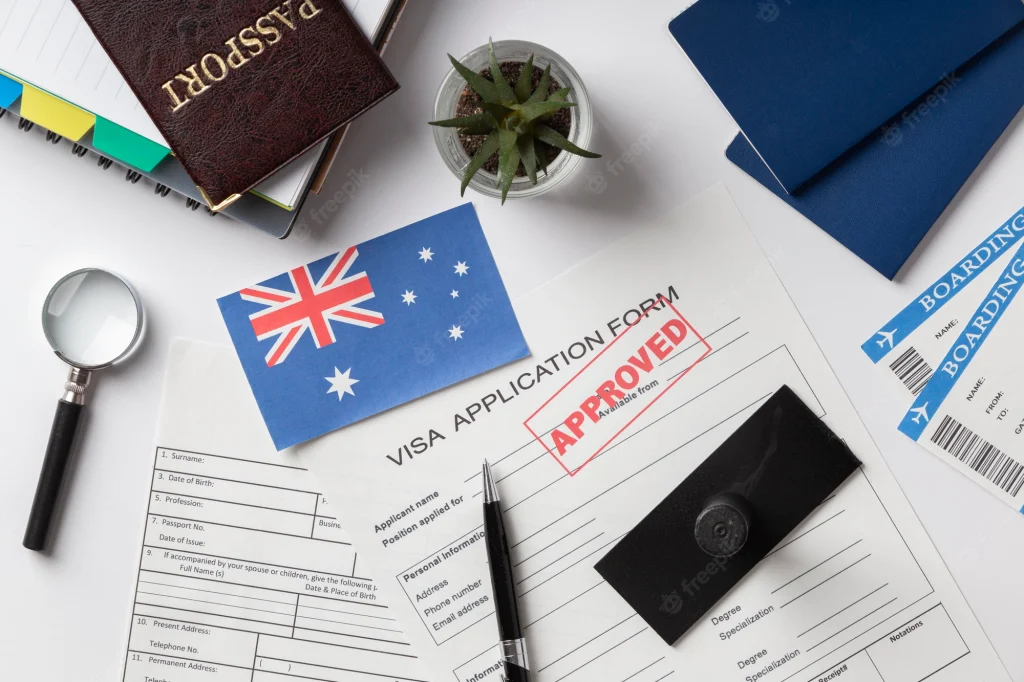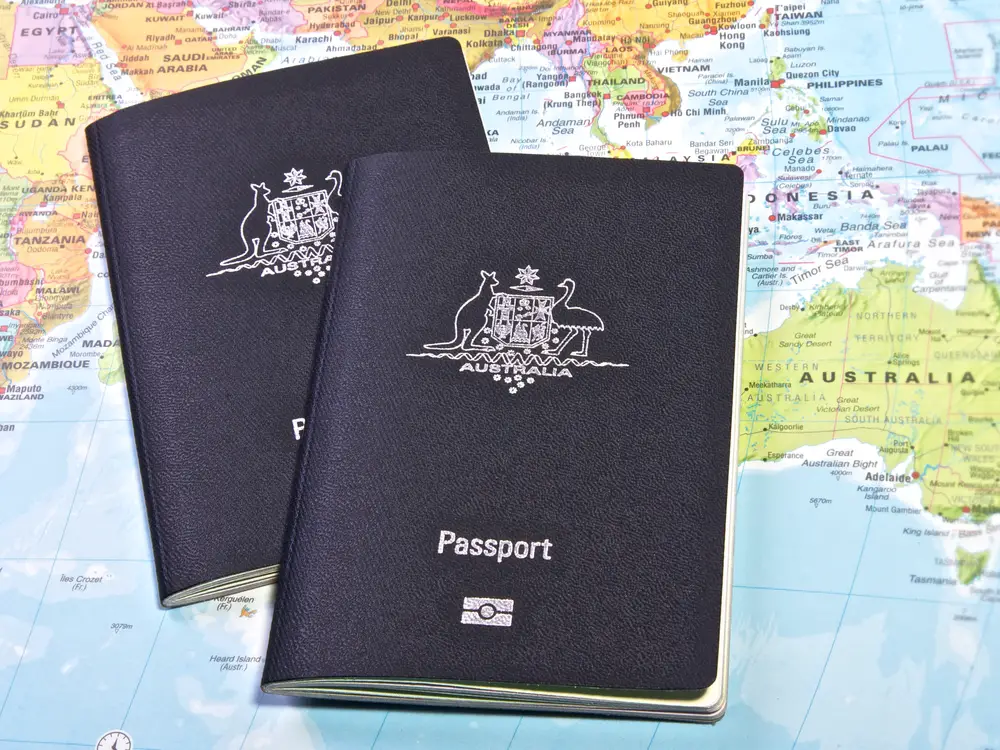Australia’s Visa-Free Travel Destinations for Nationals of These Countries in 2022
Australia passport holders may use this website to learn about the countries they can visit without a typical visa, as well as other useful information for their upcoming trip in 2022. As an added bonus, it will include the nations that provide visa-free or ETA-enabled entry (eTA). Keep in mind that you don’t need a visa to visit or stay in any of the countries on the list of those that provide visa-free entry to Australian citizens. The states that an Australian passport bearer may visit without a visa, with a visa on arrival, or with an electronic travel authorization are all included in the list of visa-free nations.
| TYPE OF ACCESS | NUMBER OF COUNTRIES |
| Visa-Free Countries | 103 (51,5%) |
| Visa-On-Arrival Countries | 36 (18%) |
| eVisa Countries | 25 (12,5%) |
| eTA Countries | 6 (3%) |
| Visa Countries | 30 (15%) |

How many countries do Australian passport holders not need a visa to visit?
Australian passport holders are exempt from visa requirements for entry to 103 different countries. More than half the world’s nations fall under that category. Most of these nations may be found in Europe and South America. All the countries that do not need visas from Australian residents are shown below. The number of days they may remain without a visa will also be shown.
| Albania (90 days) | Lesotho |
| Andorra (90 days) | Liechtenstein (90 days) |
| Antigua and Barbuda (180 days) | Lithuania (90 days) |
| Argentina (90 days) | Luxembourg (90 days) |
| Armenia (180 days) | Malaysia (90 days) |
| Austria (90 days) | Malta (90 days) |
| Bahamas (90 days) | Mauritius (90 days) |
| Barbados (180 days) | Mexico (180 days) |
| Belarus (30 days) | Micronesia (30 days) |
| Belgium (90 days) | Moldova (90 days) |
| Belize | Monaco (90 days) |
| Bolivia (90 days) | Montenegro (90 days) |
| Bosnia and Herzegovina (90 days) | Morocco (90 days) |
| Botswana (90 days) | Namibia (90 days) |
| Brazil (90 days) | Netherlands (90 days) |
| Bulgaria (90 days) | New Zealand |
| Colombia (90 days) | Nicaragua (90 days) |
| Costa Rica (90 days) | North Macedonia (90 days) |
| Croatia (90 days) | Norway (90 days) |
| Cyprus (90 days) | Palestinian Territories |
| Czech Republic (90 days) | Panama (90 days) |
| Denmark (90 days) | Paraguay (90 days) |
| Dominica (180 days) | Peru (180 days) |
| Dominican Republic | Philippines (30 days) |
| Ecuador (90 days) | Poland (90 days) |
| El Salvador (90 days) | Portugal (90 days) |
| Estonia (90 days) | Qatar (30 days) |
| Eswatini (30 days) | Romania (90 days) |
| Fiji (120 days) | Saint Kitts and Nevis (90 days) |
| Finland (90 days) | Saint Lucia (42 days) |
| France (90 days) | San Marino (90 days) |
| Gambia (90 days) | Senegal (90 days) |
| Georgia (360 days) | Serbia (90 days) |
| Germany (90 days) | Singapore (90 days) |
| Greece (90 days) | Slovakia (90 days) |
| Grenada (90 days) | Slovenia (90 days) |
| Guatemala (90 days) | South Africa (90 days) |
| Guyana (90 days) | Spain (90 days) |
| Haiti (90 days) | St. Vincent and the Grenadines (30 days) |
| Honduras (90 days) | Sweden (90 days) |
| Hong Kong (90 days) | Switzerland (90 days) |
| Hungary (90 days) | Tajikistan (30 days) |
| Iceland (90 days) | Thailand (30 days) |
| Ireland (90 days) | Tunisia (90 days) |
| Israel (90 days) | Ukraine (90 days) |
| Italy (90 days) | United Kingdom (180 days) |
| Jamaica | Uruguay (90 days) |
| Kazakhstan (30 days) | Uzbekistan (30 days) |
| Kiribati (120 days) | Vanuatu (30 days) |
| Kosovo (90 days) | Vatican City (90 days) |
| Kyrgyzstan (60 days) | Venezuela (90 days) |
| Latvia (90 days) |

How many countries do Australians have the option to visit with a visa upon arrival?
Visas are not required for citizens of Australia to enter 42 countries.
Get your visa on arrival at the airport, land border, or seaport. To benefit from this document, Australian citizens do not need to apply for a visa in advance of their trip. Tourists may remain in the nation for a certain duration if they have obtained the necessary documentation.
To which countries may Australians get a visa upon arrival?
Africa and Asia have the lion’s share of the world’s nations that demand visas upon arrival. The countries that issue Australians a visa upon arrival, together with details on its validity, may be seen in the table below.
With an eVisa, how many countries can Australians travel to?
There are 32 countries that need an eVisa for Australian passport holders.
| Angola | Mozambique (30 days) |
| Bahrain (30 days) | Nepal (90 days) |
| Bangladesh (30 days) | Nigeria |
| Brunei (30 days) | Oman (14 days) |
| Burkina Faso (30 days) | Palau (30 days) |
| Burundi (30 days) | Papua New Guinea |
| Cape Verde | Rwanda (30 days) |
| Comoros (45 days) | Samoa (60 days) |
| Egypt (30 days) | Saudi Arabia (90 days) |
| Ethiopia | Sierra Leone (30 days) |
| Gabon (90 days) | Solomon Islands (90 days) |
| Guinea-Bissau (90 days) | Somalia (30 days) |
| Indonesia (30 days) | Tanzania |
| Iraq (60 days) | Timor-Leste (30 days) |
| Jordan | Togo (7 days) |
| Laos (30 days) | Tonga (31 days) |
| Lebanon (30 days) | Trinidad and Tobago |
| Madagascar (90 days) | Tuvalu (30 days) |
| Malawi (30 days) | United Arab Emirates (30 days) |
| Maldives (30 days) | Zambia (90 days) |
| Mauritania | Zimbabwe (90 days) |
The term “eVisa” refers to a kind of electronic travel permission document. Both the application and approval processes take place entirely online. Its function may be recreational, commercial, or just transportation. No physical copies of required papers may be submitted for an eVisa; instead, you must scan and upload them. Before leaving the nation, the passenger must get his eVisa.

To visit which countries does an eVisa for Australians required?
The majority of the nations that want Australians to get an eVisa are in Africa and the Middle East. The nations that need an eVisa to enter are listed below.
Just how many nations need visas from Aussies before they may set foot on their soil?
In order to enter twenty-four countries, Australian nationals must first get a visa.
While many U.S. states provide Australian citizens with visa-free travel, a few do not. Whether you want to know if you need a visa to enter your target country, the best place to look is the government’s own website.
Visa requirements for travel to which countries do Australia (and Australians) need to check?
Australians will need a visa to enter most of countries in Africa and Asia. The countries that Australian nationals will need a visa to enter are shown below.
With an approved eTA, Australians may visit 8 different countries.
Anyone who isn’t required to have a visa in order to enter the United States must get an eTA before they go. It is used in counting the site’s visitors. It is connected to the passenger’s passport and is used for pre-arrival screening of airline passengers.
Insights for Australians on Visa-Free Travel
The Australian passport grants visa-free entry to a large number of countries. More than half of the world’s nations (103 total) do not need visas for travel to Australia. Visas are not required for entry to 42 countries for Australians. In addition, eTA approval is required for entry to five countries for Australian citizens. Australian residents need visas to enter just 24 countries.





